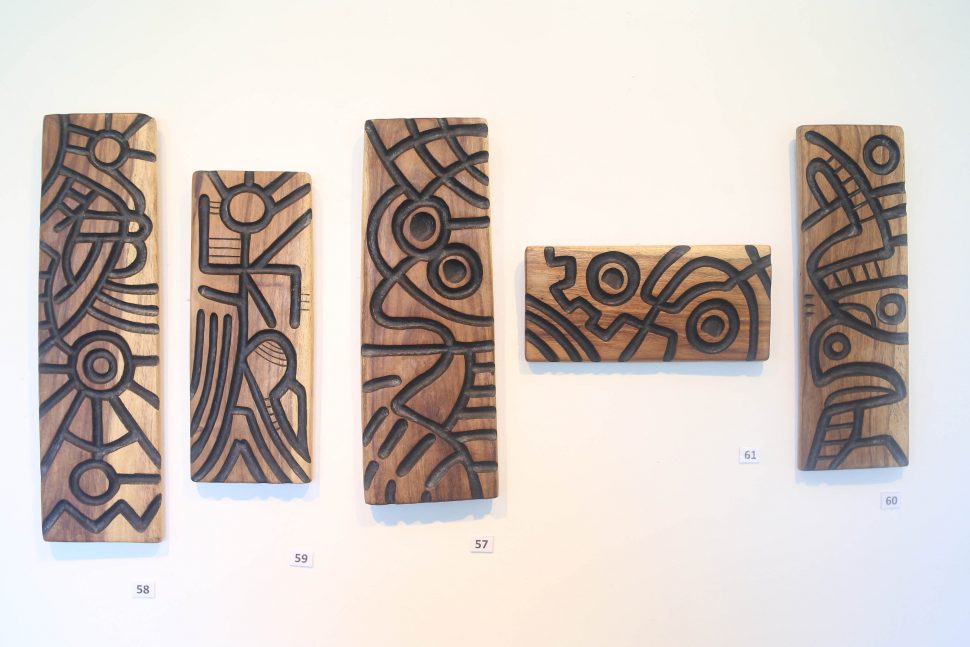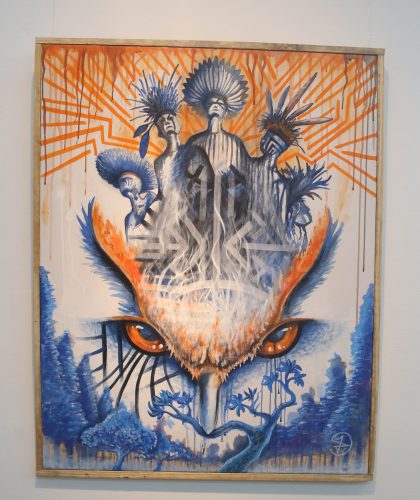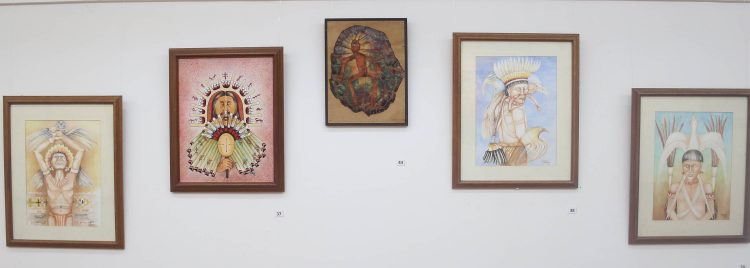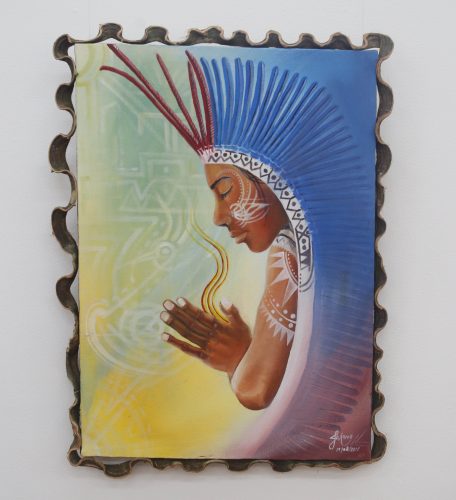The works of ceramist Stephanie Correia and other indigenous artists are on display at the National Gallery of Art as part of the annual Indigenous Art Exhibition.
One in a series of events on the calendar of activities for Indigenous Heritage Month, this year’s exhibition pays homage to Correia (1930-2000).
In addition to several of Correia’s pieces which are part of the National Collection, the exhibition features the work of renowned artists Desmond Ali, Oswald Hussein and George Simon as well as those of several young indigenous artists including Jerry Marco, Nigel Butler, Wilkie Garey George, Ransford Simon and Laurindo John.
According to a compilation of notes by writer Robert Lallije, renowned artist and archeologist George Simon and Ohene Koama, Curator of the National Gallery of Art, Correia was known through the Caribbean for her work.
Born in the Moruca Sub-District in the northwest, Correia was the third of nine children parented by the late Stephen Campbell and Umblina Campbell. She enjoyed an idyllic childhood in a farming community and had the benefit of accompanying her father on visits to other indigenous villages, boating, fishing and farming trips.
It is said that these experiences “awakened” Correia’s interest in the rich folklore of her indigenous heritage. Her parents also noticed her artistic ability and encouraged her even further.
While a student at the Martindale Roman Catholic Primary School, she was appointed Pupil Teacher at 14 years and in 1950 she was called to Georgetown to attend the Guyana Teachers Training College where she graduated as a Class 1 Trained Teacher.
She also won the first place in her batch of 24 and the Bain Grey Prize for being the most outstanding student. Her art tutor was the renowned E.R Burrows after whom the school of art is named.
It was noted too that whenever Correia travelled she would take copious notes, make numerous sketches of rock paintings, petroglyphs and hieroglyphics; she also spoke at length about and recorded the legends and stories of the people she interacted with.
Her dedication to the arts did not go unnoticed as she was awarded the Medal of Service in 1980 for her dedication to the arts and for the creative use of Indigenous materials and design. This award was followed by that of the Golden Arrow of Achievement which she received in 1996.
Minister in the Ministry of Indigenous Peoples’ Affairs Valerie Garrido-Lowe in her feature address at the launch on Thursday, described Correia as a great woman and indigenous artist.
“Our indigenous people are remarkable artists, we have seen this at length during the past five days of food and craft exhibition where many pieces were on display. I believe our visitors were astounded by the wide array of tibisiri craft, paintings and ceramics all exquisitely constructed. These skills were not taught to us in schools, they were passed through centuries of artistic technologies that are a part of our DNA as indigenous peoples. We surely have to be proud of our capabilities and talents,” Garrido-Lowe said.
“Stephanie Correia AA was one such persons that not only indigenous people can be proud of but the entire Guyanese nation and the Caribbean. It was fitting that Stephanie receive the Medal of Service and the Golden Arrow of Achievement and we are delighted that the event can pay tribute to this great woman and indigenous artist… Let us take a leaf out of the book of the late Stephanie Correia and let us pass her spirit on to the younger generation and like her manta, make your career a chosen way of life, a voyage of discovery and a search for excellence that never ends,” the Minister added.
The exhibition at Castellani House on Vlissengen Road and Homestretch Avenue is open to the public from Monday to Friday from 10:00hrs to 16:30hrs and on Saturdays from 10:00hrs to 14:00hrs and will run until September 29.








